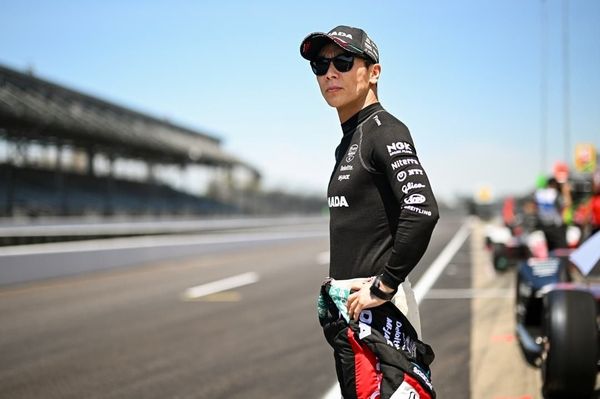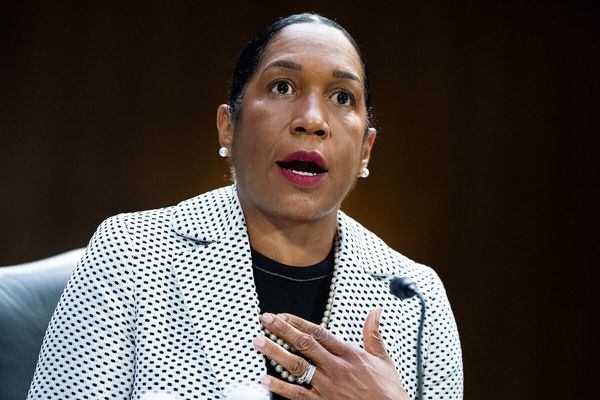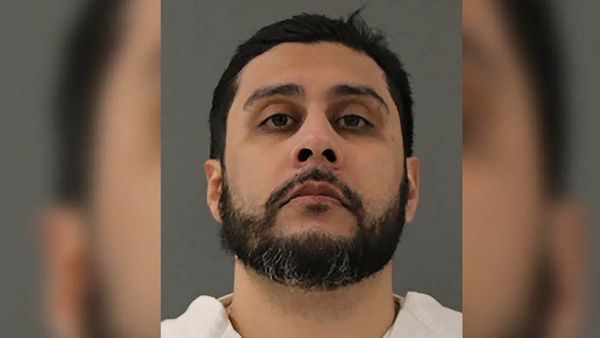The ship at the centre of the worst maritime disaster in Australia's history has been discovered more than 4,000 metres beneath the sea, 81 years after it sank.
Japanese transport ship SS Montevideo Maru sank with about 979 Australian troops and civilians on July 1, 1942, off the coast of the Philippines.
It was torpedoed by an American submarine, which did not know it was carrying prisoners of war and civilians captured in Rabaul.
In total, about 1,060 prisoners were lost, including 850 service members and 210 civilians from 14 countries.
The location of the wreck has remained a mystery for decades — until now.
SS Montevideo Maru was found after 12 days of searching in the South China Sea, by a team led by not-for-profit Silentworld Foundation, deep-sea survey specialists Fugro and supported by the Department of Defence.
The wreckage will not be disturbed, and no human remains or artefacts will be removed. The site, which sits deeper than the wreck of the Titanic, will be recorded for research purposes.
Features found on scans of the wreckage, including the hold, the foremast, and the curve of the bow, match those found on drawings of the Montevideo Maru.
Silentworld Foundation director John Mullens told ABC News Breakfast there were mixed emotions on board the ship when the discovery was made.
"We're looking at the gravesite of over 1,000 people," he said.
"We lost nearly twice as many [Australians] as in the whole of the Vietnam War, so it's extraordinarily significant for families and descendants.
"[The significance] is a mixture of the technical challenge, which is absorbing and motivating … but on the other side of it is the human side.
"When we first saw the images coming up of the ship no-one had seen for 80 years, since that terrible night, it was pretty emotional stuff.
"We had two people on board who had family members who were lost, so while on the one side there were cheers, on the other there were a few tears. It was very emotional."
Prime Minister Anthony Albanese said he hoped the discovery would bring "a measure of comfort" to the families of the victims.
"The extraordinary effort behind this discovery speaks for the enduring truth of Australia's solemn national promise to always remember and honour those who served our country," he said.
"This is the heart and the spirit of Lest We Forget."
Years of research and underwater scans led to 'tomb'
The discovery was a long time in the making for technical director and submarine specialist Captain Roger Turner, who spent years researching the wreck to narrow down its location.
"We had Japanese researchers and American researchers helping to put together the story," he told ABC News.
"There was a lot of information out there but ours was the first time it had all been considered in one breath and put together in an argument that demonstrated where we hoped to find it.
"We should refer to it as not a wreck but a tomb. It's where more than 1,100 souls now lie at peace."
The team conducted "bottom contour mapping" to initially locate the Montevideo, Mr Turner said.
"[That] allowed us to program an autonomous underwater vehicle so that it could then fly at a constant height over the sea bed," he said.
"The sea bed was actually delightfully, boringly flat, which was great because then it meant anything we might find would stand out and be easy to identify.
"Then, when we got the information back from [our third search], there were the obstacles on the bottom very recognisable as the Montevideo Maru."
He added there was still a lot of work to do to unpack the information revealed by the scans and underwater vehicles.
"As we speak, the [underwater vehicle] is conducting a more detailed search of the debris field underneath the ship," he said.
"We hope that will bring back still more clues as to the succession of events."
'Hugely emotional' moment for families
The discovery has come as a form of closure for families, including Noosa woman Cathy Parry-McLennan, whose grandfather Arthur Parry was a radiologist on the ship when it went down.
She said her grandmother and her father, just 13 years old when Dr Parry went missing, waited years to find out what happened.
"[My grandmother] was evacuated with my father and his siblings to Sydney, and then she was told on October 30, 1945," she said.
"I just remember my father telling me for years they didn't know what had happened to him.
"They knew he'd been in New Guinea, he writes them letters … there'd been stories he'd been beheaded, that he might still be in hiding, and then they got the telegram.
"It's a lovely thing to have received this and know that he's been found."
For her father, Colwyn Parry, there had always been a "great sense of loss but a great love as well" for his missing father, Ms Parry-McLennan said.
"My father was so proud of him," she said.
"He always talked about his father as being loving, as being a bit of a jokester."
Dr Parry had been working in Papua New Guinea for the local health department, and was not allowed to return to Australia when the war broke out, instead staying on as a doctor in Rabaul and Kokopo.
He declined evacuation when the situation grew more serious, according to a 1958 article retelling the story of the Japanese Army's arrival in Rabaul.
"[A Kokopo plantationer said], 'The situation is grim, would you like to come with us? Do you have any other escape avenues?'" read the article, which was saved by Colwyn Parry and passed on to his daughter after his death six years ago.
"Arthur Parry shook his head and said, 'I cannot go. There are 200 boys in this hospital and I must stay and do what I must to look after them.'"
Other families lost multiple members of their family, including the Turners of NSW, whose three young sons Sidney, Dudley and Daryl all enlisted together in Australia's first commando group.
On board the search vessel when the wreck was discovered was Andrea Williams, who lost both her grandfather and her great uncle in the disaster.
Ms Williams is a founding member of the Rabaul and Montevideo Maru Society, which represents the interests of the descendants.
"Today is an extraordinarily momentous day for all Australians connected with this tragic disaster," Ms Williams said.
"Having had a grandfather and great-uncle as civilian internees on Montevideo Maru always meant the story was important to me, as it is to so many generations of families whose men perished.
"I could never understand why it was not a more powerful part of our Australian WWII history.
"Being part of the Silentworld team that has found the wreck has been both hugely emotional and also fulfilling."
Chair of the Australian War Memorial Kim Beazley described the discovery of SS Montevideo Maru as a "monumental moment in war history".
The former federal opposition leader's uncle, Syd Beazley, was among those on board the ship and was lost in the tragedy.
"Finding the site of Australia's most devastating loss at sea will help heal Australia's collective memory for generations," Mr Beazley said.
"This has solved a Second World War mystery and my family's history."
In 2009 Mr Beazley joined relatives urging the federal government to launch a search for the wreck.
"This discovery is connected to an enormous Australian tragedy, both from massacres on land and the huge loss of life at sea," Mr Beazley said.
"This is a monumental moment in history and for the families who have agonised and grieved about what happened to their loved ones on this ill-fated ship."
Australian Army Chief Lieutenant General Simon Stuart said those involved had met a "terrible fate at sea".
"Today we remember their service, and the loss of all those aboard, including the 20 Japanese guards and crew, the Norwegian sailors and the hundreds of civilians from many nations," he said.
"I want to thank the Silentworld team and the dedicated researchers, including the Unrecovered War Casualties team at army, who have never given up hope of finding the final resting place of the Montevideo Maru."
"A loss like this reaches down through the decades and reminds us all of the human cost of conflict."
Letters from long-dead loved ones
The Japanese prisoner of war ship was transporting Australians and others to Hainan Island when it was sunk by US Navy submarine the USS Sturgeon.
The Sturgeon fired its four torpedoes at the Montevideo Maru. Lifeboats onboard the vessel were launched, but all capsized and the ship sank in less than 11 minutes.
Many families were not told of their relatives' deaths for years.
Also on board the Montevideo Maru were Australian soldiers who had been stationed with Lark Force at Rabaul. They were captured by conquering Japanese soldiers just weeks after the attack on Pearl Harbour.
Months later, hundreds of handwritten letters written by the men were dropped from the skies by Japanese bombers over Port Moresby.
By the time they reached their intended destination, all of the authors were dead.
Among them was Ronald Freeman, a gunner with the 17th anti-tank battery in Rabaul, who signed off a letter to his pregnant wife Dorothy and his two-year-old daughter Vicki: "I love you, I love. Kiss Vicki for me. Your loving husband."
A memorial was unveiled in 2012 to commemorate the disaster, with the ceremony attended by then-federal education minister Peter Garrett, whose grandfather, Tom Garrett, was one of the civilians who died on the Montevideo Maru.
The National Archives of Australia also launched a new website at the time listing all the names available of those on board, including a complete translated copy of the Japanese military's list of victims.
The deaths were not fully revealed until the end of the war. Relatives are able to search for family members and add their own photographs and messages to pay tribute to their loved ones.







